* (restored)
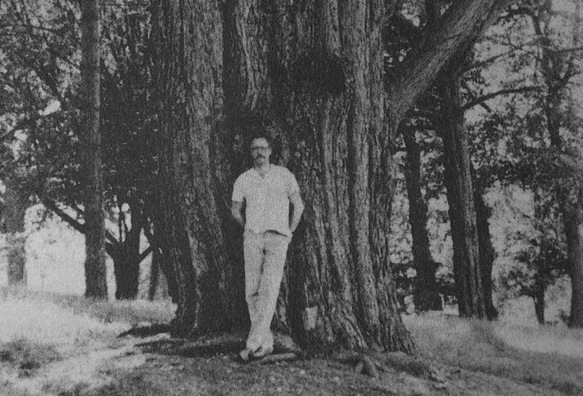
There is no antidote against the opium of time. The winter sun shows how soon the light fades from the ash, how soon night enfolds us. Hour upon hour is added to the sum. Time itself grows old. Pyramids, arches and obelisks are melting pillars of snow. Not even those who have found a place amidst the heavenly constellations have perpetuated their names: Nimrod is lost in Orion, and Osiris in the Dog Star. Indeed, old families last not three oaks. To set ones name to a work gives no one a title to be remembered, for who knows how many of the best of men have gone without a trace? The iniquity of oblivion blindly scatters her poppyseed and when wretchedness falls upon us one summer’s day like snow, all we wish for is to be forgotten. — W.G. Sebald, The Rings of Saturn
______________
W. G. Sebald was born in Wertach im Allgäu, Germany, in 1944. He studied German language and literature in Freiburg, Switzerland, and Manchester. He taught at the University of East Anglia in Norwich, England, for thirty years, becoming professor of European literature in 1987, and from 1989 to 1994 was the first director of the British Centre for Literary Translation. His four novels — The Rings of Saturn, The Emigrants, Vertigo, and Austerlitz — have won a number of international awards, including the National Book Critics Circle Award, the Los Angeles Times Book Award, the Berlin Literature Prize, and the Literatur Nord Prize. He died in an automobile accident in December 2001. In a 2007 interview the secretary of the Swedish Academy, Horace Engdahl, stated Sebald as one of three newly deceased writers who would have been worthy Nobel Prize laureates along with Ryszard Kapuściński and Jacques Derrida.
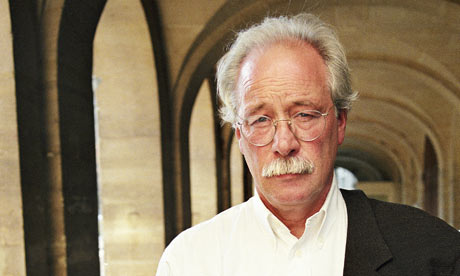
_____________
Sebald’s death was as unsettling and anomalous as his work. Here was a writer struck down at the height of his powers, at the age of fifty-seven, when he had just begun to achieve wide recognition. Each of these statements would typically be incompatible with at least one—often both—of the others. He was one of the most innovative and original contemporary writers in the world, and yet part of this originality derived from the way his prose felt as if it had been exhumed from the past, as if the spirit of ruined Europe were speaking through him. Perhaps this is why it was said, in Germany, that he wrote like a ghost. There was always something weirdly posthumous about his writing, but this only makes his physical death more shocking. — Geoff Dyer

______________
The loss feels unbearable. Premature death has brutally imposed a retroactive shape on Max Sebald’s life and work, turning early or middle things into last things. Perhaps in the future it may come to seem inevitable that the elegiac intensities inscribed by Sebald in literature do not result in a large body of work. That, instead, we have the imperishable gift of just a few books written once he found the voice in which to deliver his commanding, exquisite prose arias. But, for the moment, the loss simply feels…devastating. Unacceptable. Difficult to take in. He had an exemplary sense of vocation, full of scruples and self-doubts. The work is recklessly literary and inspired by a thrilling variety of models. These writers—from Adalbert Stifter and Jean Henri Fabre to Virginia Woolf and Thomas Bernhard—illustrate Sebald’s connection to several kinds of moral seriousness, luminousness of description, and purity of motive. He was one who demonstrates that literature can be, literally, indispensable. He was one by whom literature continues to live. — Susan Sontag
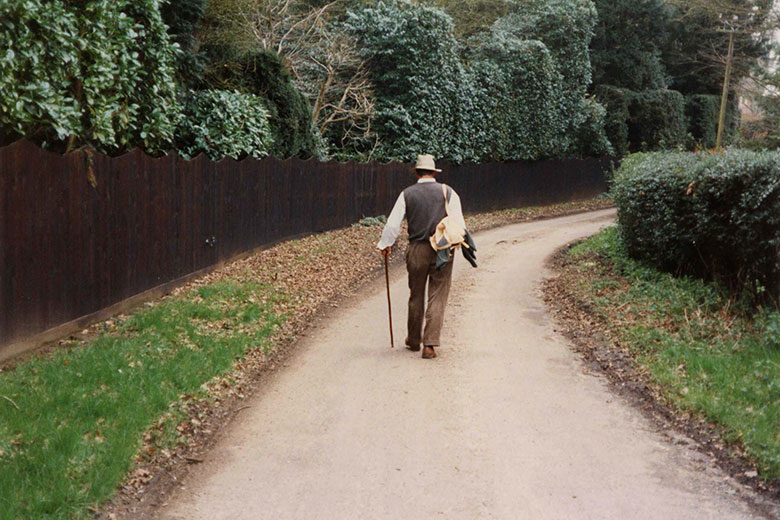
_____________
Sebald wanted to find a literary form responsive to the waves and echoes of human tragedy which spread out, across generations and nations, yet which began in his childhood. Silence and forgetting were conditions of his early life. Sebald doubted whether those who had never experienced Theresienstadt or Auschwitz could simply describe what occurred there. That would have been presumptuous, an appropriation of others’ sufferings. Like a Medusa’s head, he felt that the attempts to look directly at the horror would turn a writer into stone, or sentimentality. It was necessary, he found, to approach this subject obliquely, and to invent a new literary form, part hybrid novel, part memoir and part travelogue, often involving the experiences of one “WG Sebald”, a German writer long settled in East Anglia. He was reluctant to call his books “novels”, because he had little interest in the way contemporary writers seemed to find all meaning in personal relationships, and out of a comic but heartfelt disdain for the “grinding noises” which heavily plotted novels demanded. — Peter Handke
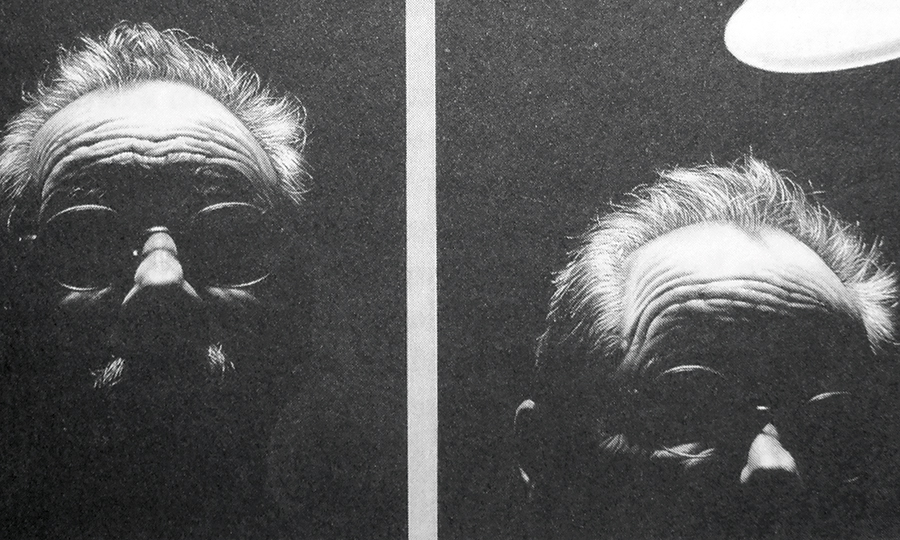
____________
Excerpt: The Emigrants (1990)
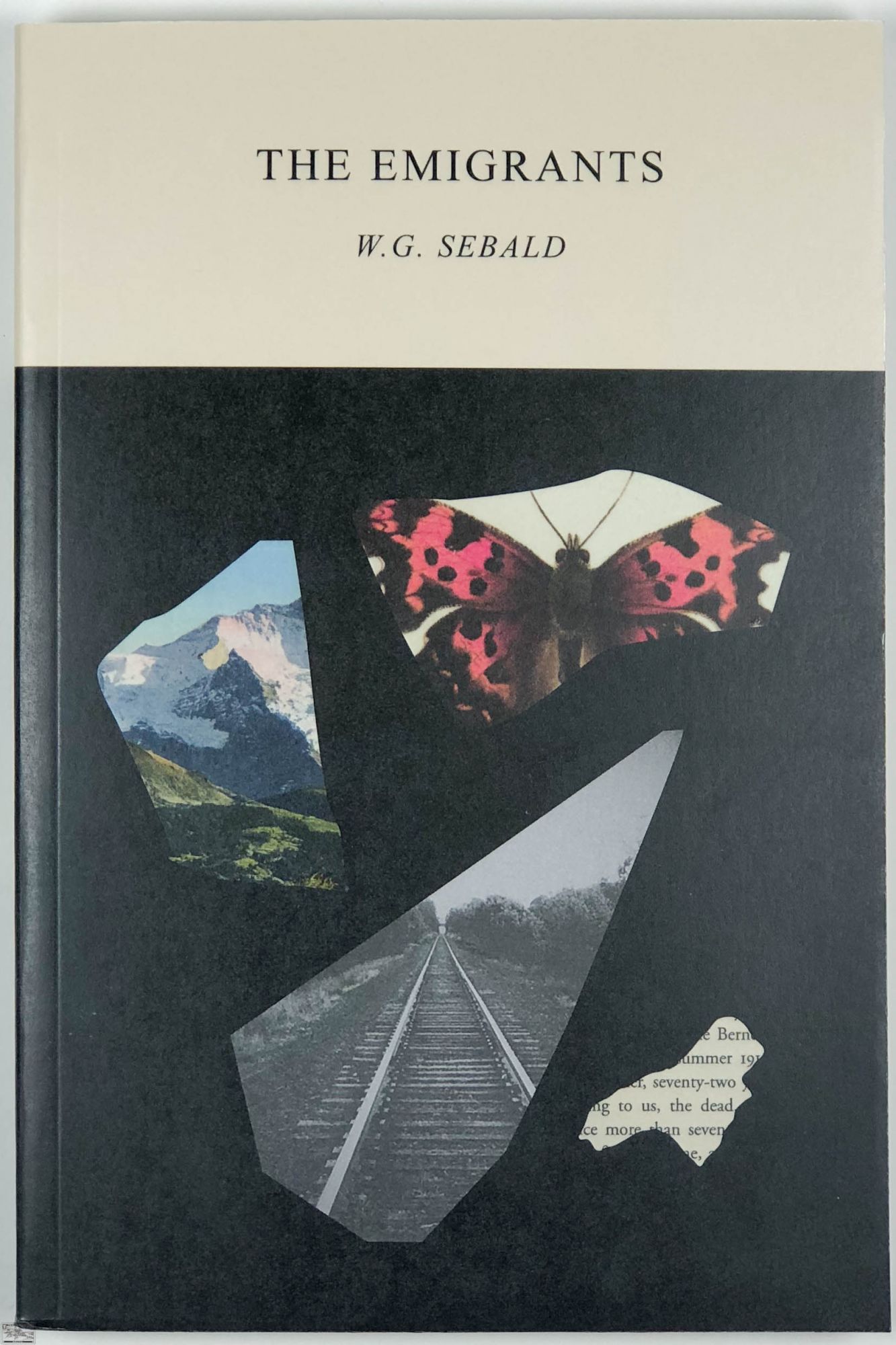
A meditation on memory and loss. Sebald re-creates the lives of four exiles–five if you include his oblique self-portrait–through their own accounts, others’ recollections, and pictures and found objects. But he brings these men before our eyes only to make them fade away, “longing for extinction.” Two were eventual suicides, another died in an asylum, the fourth still lived under a “poisonous canopy” more than 40 years after his parents’ death in Nazi Germany.
At the end of september 1970, shortly before I took up my position in Norwich, I drove out to Hingham with Clara in search of somewhere to live. For some 25 kilometres the road runs amidst fields and hedgerows, beneath spreading oak trees, past a few scattered hamlets, till at length Hingham appears, its asymmetrical gables, church tower and treetops barely rising above the flatland. The market place, broad and lined with silent facades, was deserted, but still it did not take us long to find the house the agents had described. One of the largest in the village, it stood a short distance from the church with its grassy graveyard, Scots pines and yews, up a quiet side street. The house was hidden behind a two-metre wall and a thick shrubbery of hollies and Portuguese laurel. We walked down the gentle slope of the broad driveway and across the evenly gravelled forecourt. To the right, beyond the stables and out buildings, a stand of beeches rose high into the clear autumn sky, its rookery deserted in the early afternoon, the nests dark patches in a canopy of foliage that was only occasionally disturbed. The front of the large, neoclassical house was overgrown with Virginia creeper. The door was painted black and on it was a brass knocker in the shape of afish. We knocked several times, but there was no sign of life inside the house. We stepped back a little. The sash windows, each divided into twelves panes, glinted blindly, seeming to be made of dark mirror glass. The house gave the impression that no one lived there. And I recalled the chateau in the Charente that I had once visited from Angouleme. In front of it, two crazy brothers — one a parliamentarian, the other an architect — had built a replica of the facade of the palace of Versailles, an utterly pointless counterfeit, though one which made a powerful impression from a distance. The windows of that house had been just as gleaming and blind as those of the house we now stood before. Doubtless we should have driven on without accomplishing a thing, if we had not summoned up the nerve, exchanging one of those swift glances, to at least take a look at the garden. Warily we walked round the house. On the north side, where the brick work was green with dampand variegated ivy partly covered the walls, a mossy path led past the servants’ entrance, past a woodshed, on through deep shadows, to emerge, as if upon a stage, onto a terrace with a stone balustrade overlooking a broad, square lawn bordered by flower beds, shrubs and trees. Beyond the lawn, to the west, the grounds opened out into a park landscape studded with lone lime trees, elms and holm oaks, and beyond that lay the gentle undulations of arable land and the white mountains of cloud on the horizon. In silence we gazed at this view, which drew the eye into the distance as it fell and rose in stages, and we looked for a long time, supposing ourselves quite alone, till we noticed a motionless figure lying in the shade cast on the lawn by a lofty cedar in the southwest corner of the garden. It was an old man, his head propped on his arm, and he seemed altogether absorbed in contemplation of the patch of earth immediately before his eyes. We crossed the lawn towards him, every step wonderfully light on the grass.
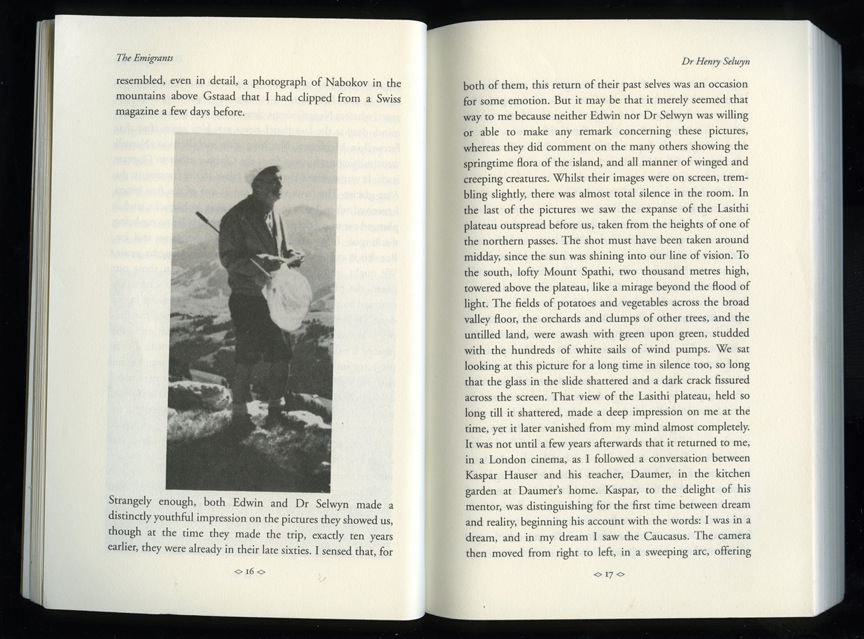
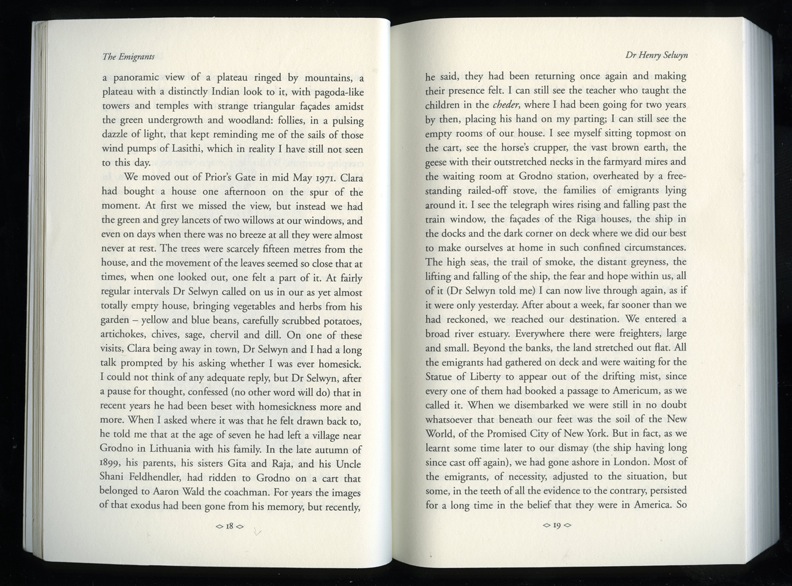
_____________
Excerpt: The Rings of Saturn (1995)
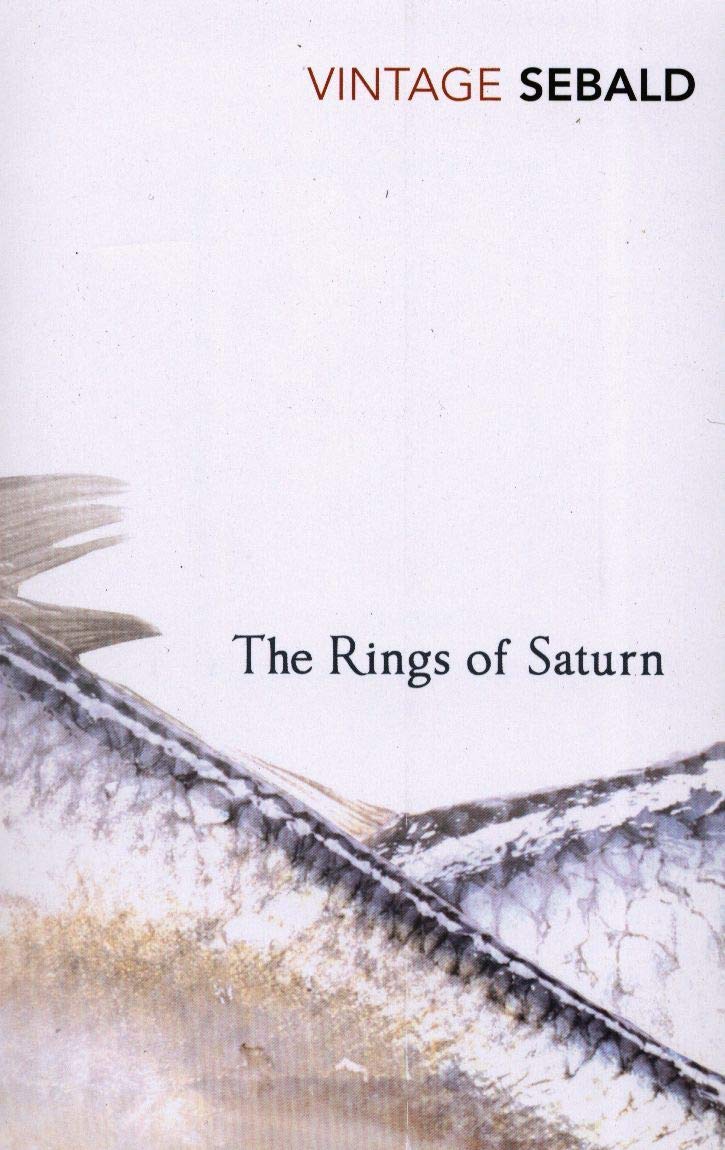
As he did so brilliantly in The Emigrants, German author Sebald once again blurs the boundaries between fact and fiction in this meditative work. Sebald’s unnamed, traveling narrator is making his way through the county of Suffolk, England, and from there back in time. We learn that he has recently been hospitalized, an event that “marked the beginning of a fissure that has since riven my life.” Sunk in his own thoughts, he becomes obsessed with the ubiquitous evidence of disintegration he views in the landscape and history of the small coastal towns.
In August 1992, when the dog days were drawing to an end, I set off to walk the county of Suffolk, in the hope of dispelling the emptiness that takes hold of me whenever I have completed a long stint of work. And in fact my hope was realized, up to a point; for I have seldom felt so carefree as I did then, walking for hours in the day through the thinly populated countryside, which stretches inland from the coast. I wonder now, however, whether there might be something in the old superstition that certain ailments of the spirit and of the body are particularly likely to beset us under the sign of the Dog Star. At all events, in retrospect I became preoccupied not only with the unaccustomed sense of freedom but also with the paralysing horror that had come over me at various times when confronted with the traces of destruction, reaching far back into the past, that were evident even in that remote place. Perhaps it was because of this that, a year to the day after I began my tour, I was taken into hospital in Norwich in a state of almost total immobility. It was then that I began in my thoughts to write these pages. I can remember precisely how, upon being admitted to that room on the eighth floor, I became overwhelmed by the feeling that the Suffolk expanses I had walked the previous summer had now shrunk once and for all to a single, blind, insensate spot. Indeed, all that could be seen of the world from my bed was the colourless patch of sky framed in the window. Several times during the day I felt a desire to assure myself of a reality I feared had vanished forever by looking out of that hospital window, which, for some strange reason, was draped with black netting, and as dusk fell the wish became so strong that, contriving to slip over the edge of the bed to the floor, half on my belly and half sideways, and then to reach the wall on all fours, I dragged myself, despite the pain, up to the window sill. In the tortured posture of a creature that has raised itself erect for the first time I stood leaning against the glass. I could not help thinking of the scene in which poor Gregor Samsa, his little legs trembling, climbs the armchair and looks out of his room, no longer remembering (so Kafka’s narrative goes) the sense of liberation that gazing out of the window had formerly given him. And just as Gregor’s dimmed eyes failed to recognize the quiet street where he and his family had lived for years, taking CharlottenstraBe for a grey wasteland, so I too found the familiar city, extending from the hospital courtyards to the far horizon, an utterly alien place. I could not believe that anything might still be alive in that maze of buildings down there; rather, it was as if I were looking down from a cliff upon a sea of stone or a field of rubble, from which the tenebrous masses of multi-storey carparks rose up like immense boulders. At that twilit hour there were no passers-by to be seen in the immediate vicinity, but for a nurse crossing the cheerless gardens outside the hospital entrance on the way to her night shift. An ambulance with its light flashing was negotiating a number of turns on its way from the city centre to Casualty. I could not hear its siren; at that height I was cocooned in an almost complete and, as it were, artificial silence. All I could hear was the wind sweeping in from the country and buffeting the window; and in between, when the sound subsided, there was the never entirely ceasing murmur in my own ears.
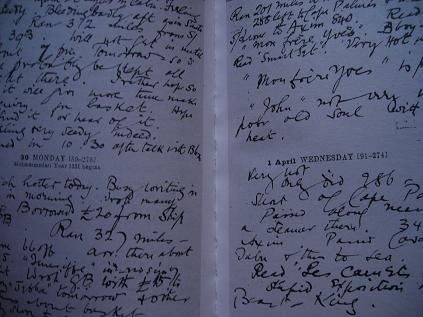
_____________
Excerpt: Vertigo (1999)
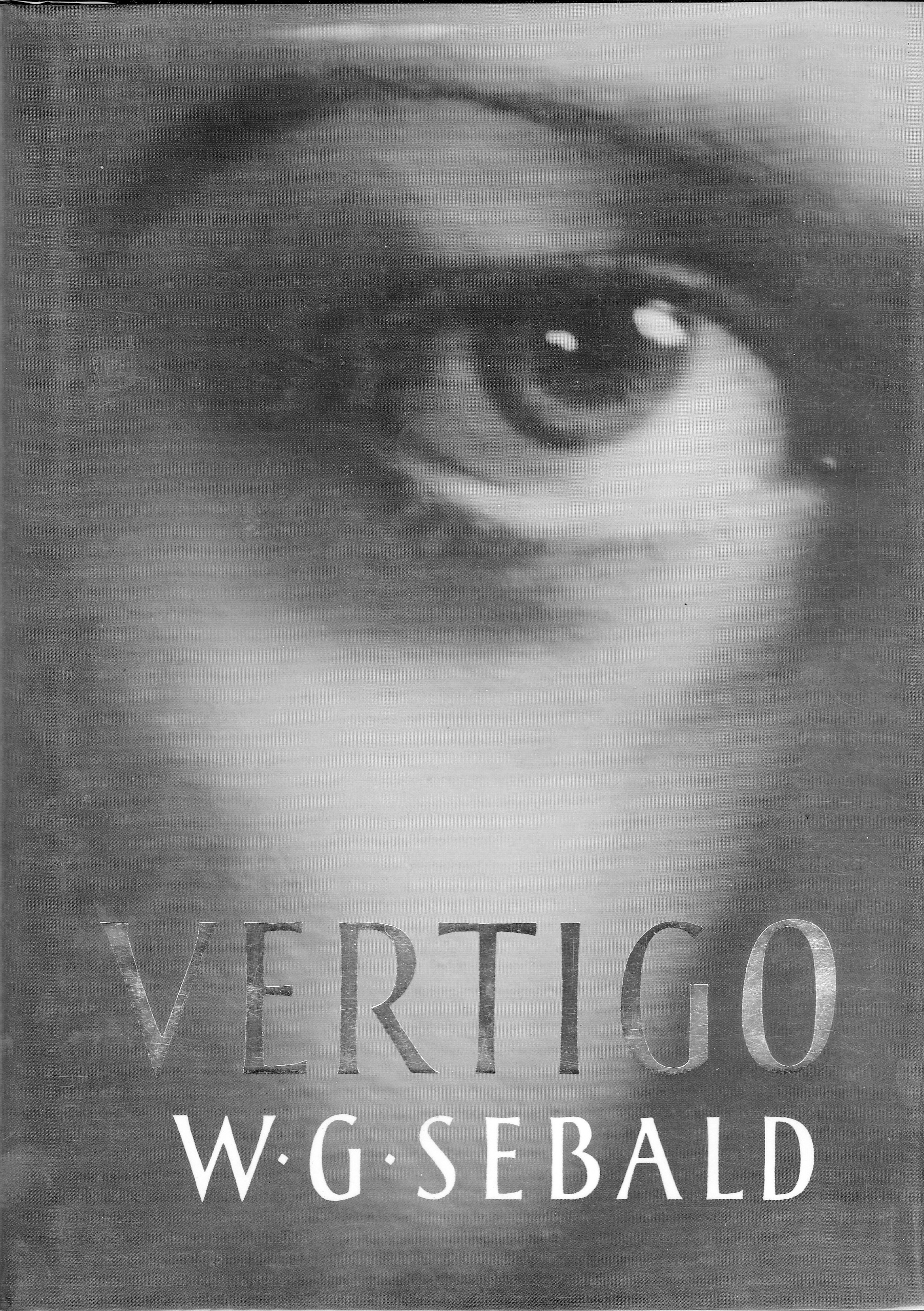
Sebald begins with Marie Henri Beyle (better known as Stendhal), cruising through the French author’s painful and unreliable recollections of his military career. Then he splices in his own voyage through Italy, allowing these historical and personal perspectives to intersect when we least expect them to. As the book develops, it returns to the same locations: Milan, Verona, Venice, and the Alps. And in the course of this fractured meandering, the reader cohabits with a haunted Franz Kafka, admires the serene beauty of the stars above Lake Garda, and ultimately returns to Sebald’s home in Bavaria, where the author confronts his childhood memories.
In mid-May of the year 1800 Napoleon and a force of 36,000 men crossed the Great St Bernard pass, an undertaking that had been regarded until that time as next to impossible. For almost a fortnight, an interminable column of men, animals and equipment proceeded from Martigny via Orsières through the Entremont valley and from there moved, in a seemingly never-ending serpentine, up to the pass two and a half thousand metres above sea level, the heavy barrels of the cannon having to be dragged by the soldiery, in hollowed-out tree trunks, now across snow and ice and now over bare outcrops and rocky escarpments.
—-Among those who took part in that legendary transalpine march, and who were not lost in nameless oblivion, was one Marie Henri Beyle. Seventeen years old at the time, he could now see before him the end of his profoundly detested and, with some enthusiasm, was embarking on a career in the armed services which was to take him the length and breadth of Europe. The notes in which the 53-year-old Beyle, writing during a sojourn at Civitavecchia, attempted to relive the tribulations of those days afford eloquent proof of the various difficulties entailed in the act of recollection. At times his view of the past consists of nothing but grey patches, then at others images appear of such extraordinary clarity he feels he can scarce credit them — such as that of General Marmont, whom he believes he saw at Martigny to the left of the track along which the column was moving, clad in the royal- and sky-blue robes of a Councillor of State, an image which he still beholds precisely thus, Beyle assures us, whenever he closes his eyes and pictures that scene, although he is well aware that at that time Marmont must have been wearing his general’s uniform and not the blue robes of state.
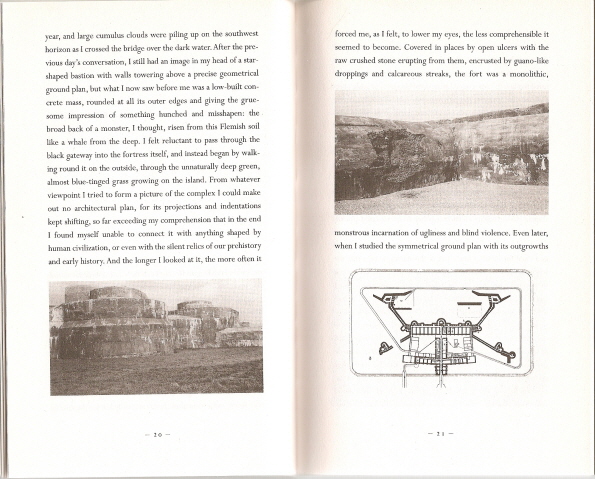
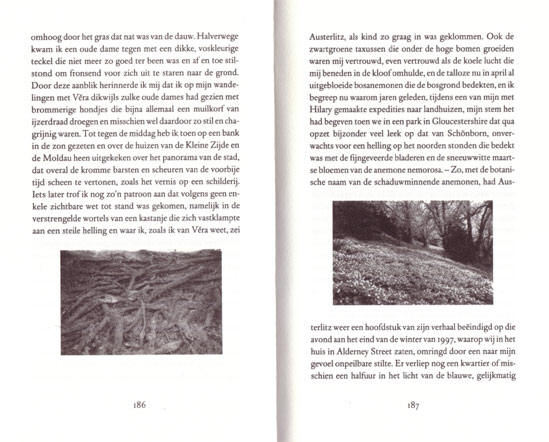
_____________
Excerpt: Austerlitz (2001)

If the mark of a great novel is that it creates its own world, drawing in the reader with its distinctive rhythms and reverberations, then W.G. Sebald’s Austerlitz may be the first great novel of the new century. An unnamed narrator, resting in a waiting room of the Antwerp rail station in the late 1960s, strikes up a conversation with a student of architecture named Austerlitz, about whom he knows almost nothing. Over the next several years, the narrator often runs into his odd, engaging acquaintance by chance on his travels, until finally, after a gap of two decades, Austerlitz decides to tell the narrator the story of his life and of his search for his origins in wartime Europe.
In the second half of the 1960s I traveled repeatedly from England to Belgium, partly for study purposes, partly for other reasons which were never entirely clear to me, staying sometimes for just one or two days, sometimes for several weeks. On one of these Belgian excursions which, as it seemed to me, always took me further and further abroad, I came on a glorious early summer’s day to the city of Antwerp, known to me previously only by name. Even on my arrival, as the train rolled slowly over the viaduct with its curious pointed turrets on both sides and into the dark station concourse, I had begun to feel unwell, and this sense of indisposition persisted for the whole of my visit to Belgium on that occasion. I still remember the uncertainty of my footsteps as I walked all round the inner city, down Jeruzalemstraat, Nachtegaalstraat, Pelikaanstraat, Paradijsstraat, Immerseelstraat, and many other streets and alleyways, until at last, plagued by a headache and my uneasy thoughts, I took refuge in the zoo by the Astridplein, next to the Centraal Station, waiting for the pain to subside. I sat there on a bench in dappled shade, beside an aviary full of brightly feathered finches and siskins fluttering about. As the afternoon drew to a close I walked through the park, and finally went to see the Nocturama, which had first been opened only a few months earlier. It was some time before my eyes became used to its artificial dusk and I could make out different animals leading their sombrous lives behind the glass by the light of a pale moon. I cannot now recall exactly what creatures I saw on that visit to the Antwerp Nocturama, but there were probably bats and jerboas from Egypt and the Gobi Desert, native European hedgehogs and owls, Australian opossums, pine martens, dormice, and lemurs, leaping from branch to branch, darting back and forth over the grayish-yellow sandy ground, or disappearing into a bamboo thicket. The only animal which has remained lingering in my memory is the raccoon. I watched it for a long time as it sat beside a little stream with a serious expression on its face, washing the same piece of apple over and over again, as if it hoped that all this washing, which went far beyond any reasonable thoroughness, would help it to escape the unreal world in which it had arrived, so to speak, through no fault of its own. Otherwise, all I remember of the denizens of the Nocturama is that several of them had strikingly large eyes, and the fixed, inquiring gaze found in certain painters and philosophers who seek to penetrate the darkness which surrounds us purely by means of looking and thinking.
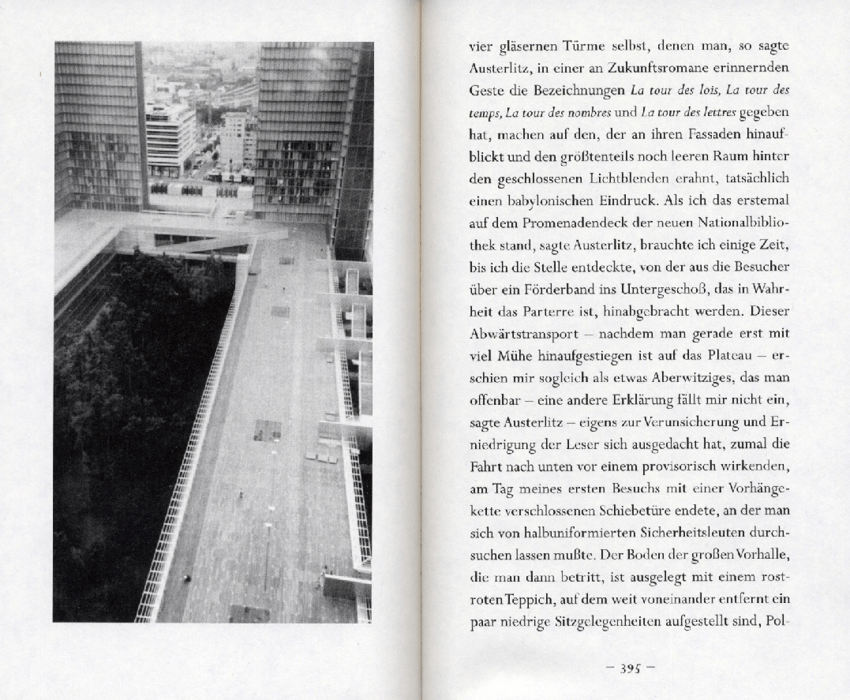
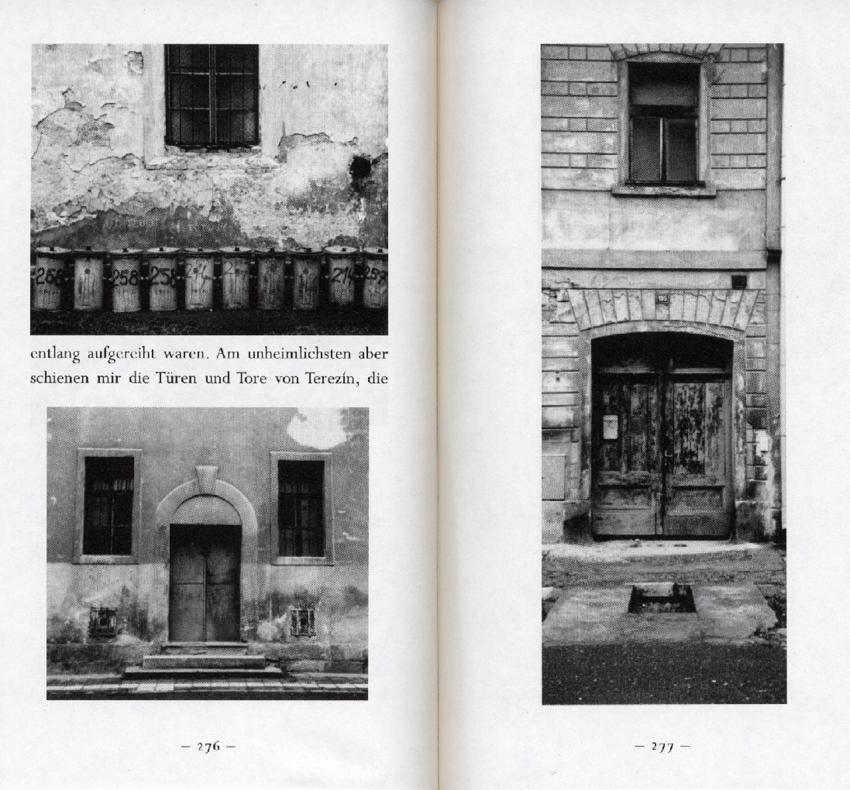
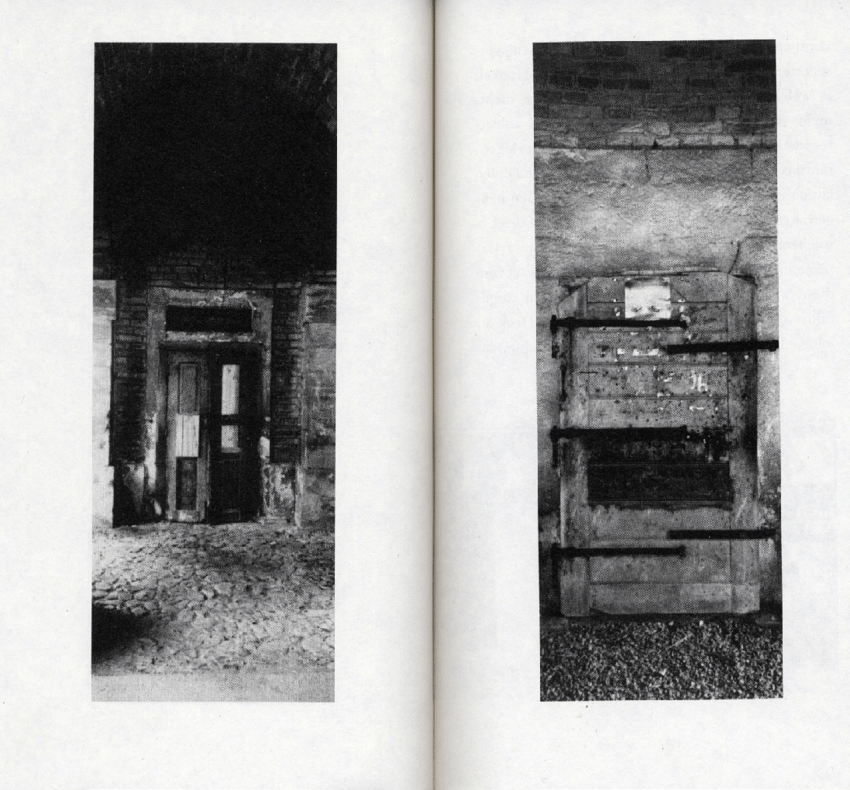
_____________
_____________
Unrecounted: Text and Image in W.G. Sebald
by Nikolai Preuschoff
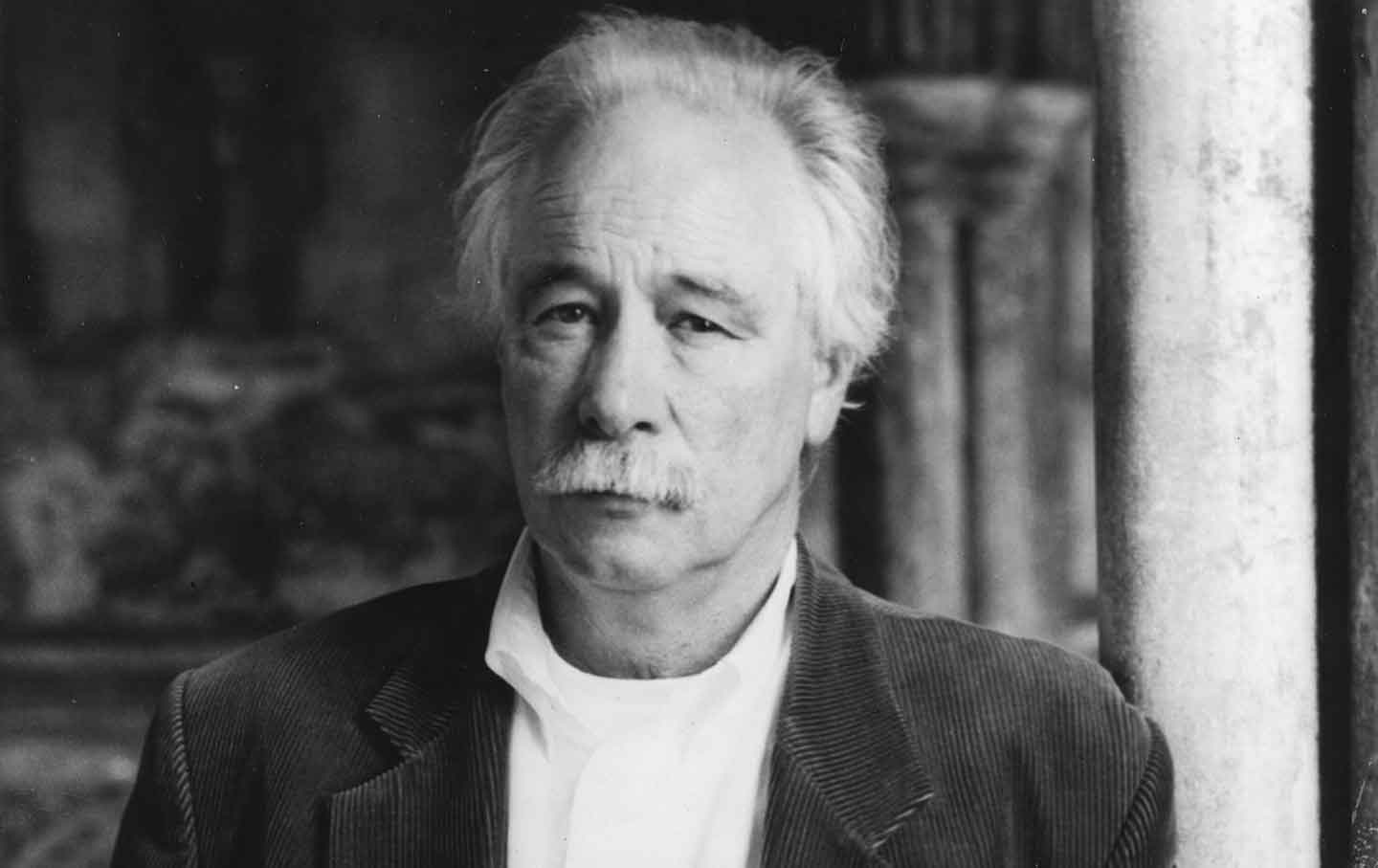
Sebald, who would have celebrated his 70th birthday this year, didn’t publish any literary texts until he was 40. There was a novel he wrote when he was still in secondary school, but it was never published and neither were the small poems he wrote, often when travelling. Things changed in the mid-80s, when Sebald, by then professor of German at the University of East Anglia, wrote a long poem after a visit to the British Museum about the German botanist and explorer Georg Willem Steller. The poem was accepted by the Austrian magazine Manuskripte, and so were the two poems that followed, portraying the medieval painter Matthias Grünewald and the author’s own alter ego. In 1988, all three poems were published by the small Bavarian publishing house Greno under the title Nach der Natur (and as After Nature [2002] by Hamish Hamilton). The edition included six black and white photographs by the photographer Thomas Becker showing half-drowned black trees and trunks in flooded fields, beautifully printed on plates that separate the images from the text.
Becker’s skillfully composed, high-resolution photographs are in stark contrast to the images Sebald would include in his later prose fiction writings, published mostly throughout the ’90s: neither Vertigo (1990) nor The Emigrants (1992) use plates any more, and many of the reproduced photographs are now taken from newspapers, postcards or family albums found at flea markets. Other images the author took himself, many of them with a small point and shoot camera, a Canon Ixus L1, using colour negative film.
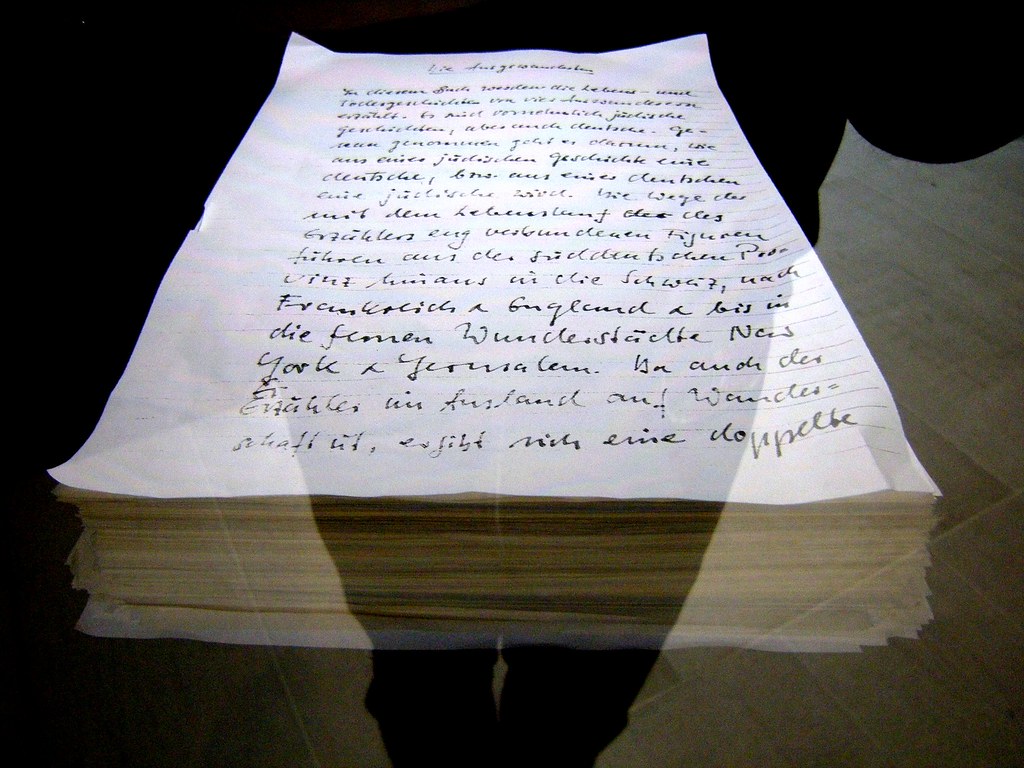
the manuscript of The Emigrants
Sebald’s literary work is exceptionally visual, and his writing from and with images demonstrates an approach to literature not in competition with (or afraid of) the visual, but in dialogue with it, knowing that for both description and photo or drawing there first needs to be careful observation and study. It is in this regard quite significant that Sebald wrote his first published literary text about a botanist who travelled with Vitus Bering’s second expedition to Kamchatka.
Born in Bavaria, Sebald studied German literature in Freiburg im Breisgau and later in Switzerland. Soon afterwards, he moved to Manchester where he received a PhD for a study on Döblin and started to pursue an academic career that brought him to Norwich. As a writer, a bit like the Arctic-explorer Steller, Sebald was drawn to unknown regions and forgotten stories, although the landscapes of his writing proved not to be too far from his home: the world of recent German and European history newly revealed to his expatriate eyes. His prose fiction writings can be described as unique and, apart from their visual component, relatively conservative: all his writings are concerned with the past, particularly the German past and the Shoah, which has been described as a centre that his writings circle around. In particular they are concerned with the broader history of modernity in its multiple, but mostly destructive aspects – imperialism and colonialism, industrialisation and exploitation.
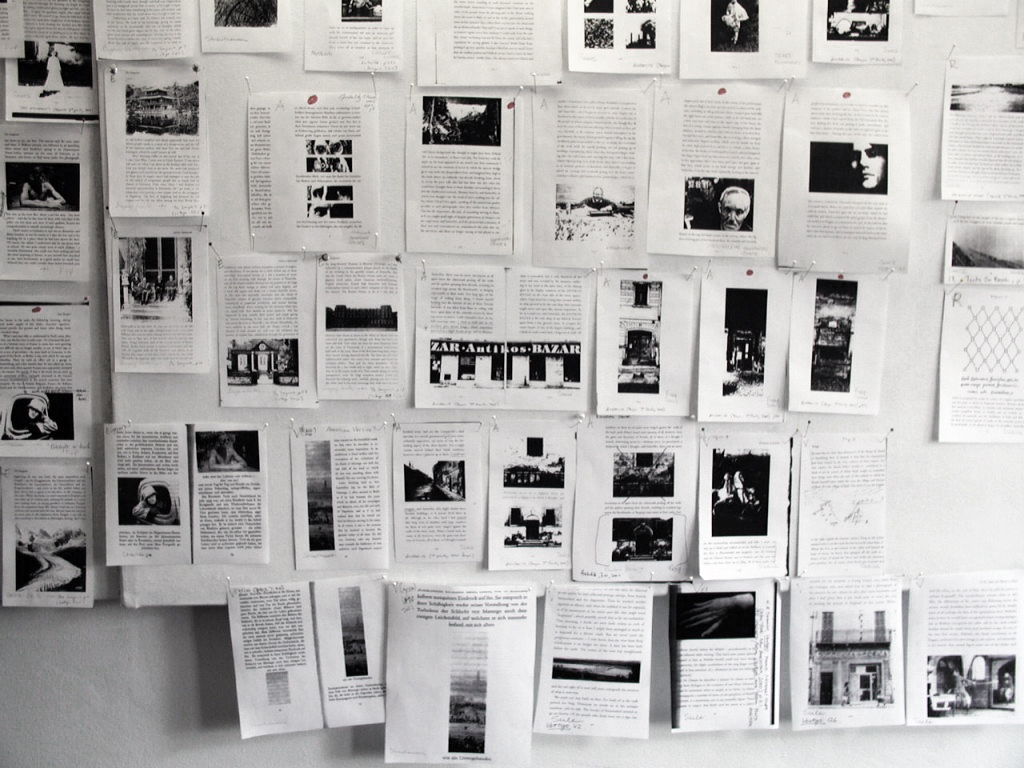
Sebald’s writing style, at once melodic and melancholic, is oriented to 19th and early 20th century literature: he praised the work of Austrian and Swiss writers such as Keller and Stifter, and his language, even in his interviews, has something old fashioned about it (most likely due to the fact that he left southern Germany, where he grew up and studied, in the 60s, and preserved his Bavarian German though all the years he lived in southeast England). What makes Sebald’s prose unique and sets it apart from both his 19th and early 20th century patron saints and other contemporary German writers is a technique of montage, of which the included images are only the most visible expression: the extensive use of quotations and references taken from all kinds of sources, sometimes marked and exposed in the text, sometimes hidden and included like little academic riddles for intertextual research. But because Sebald’s images are the most obvious among the various montaged elements, and because they not only illustrate but influence the narrative, it makes sense to talk about ‘intermedial’ rather than ‘intertextual’ texts. …
However, in Sebald’s work the text still dominates the images: the text would be changed by the omission of the images, but it would still be readable; the images on their own rarely serve the narrative function. Sebald was a long-time amateur photographer, but it would be an exaggeration to call his work exceptionally ambitious. Travelling with a small film camera, many of his pictures can safely be called snapshots. As a writer though, he takes images quite seriously. His habit of collecting photographs and postcards from flea markets and charity shops inspired Tacita Dean’s fourth artist’s book, FLOH, in 2001. And while it seems remarkable that Dean composes a book exclusively out of portraits, holiday snapshots and other documents of banal occurrences, Sebald, too, is not eager to exhibit his own photographic work, but prefers to use not only different sources (the lack of clarity regarding the pictures’ origins has drawn criticism) but also different media, combined, reflected upon and given a new existence in his narratives.
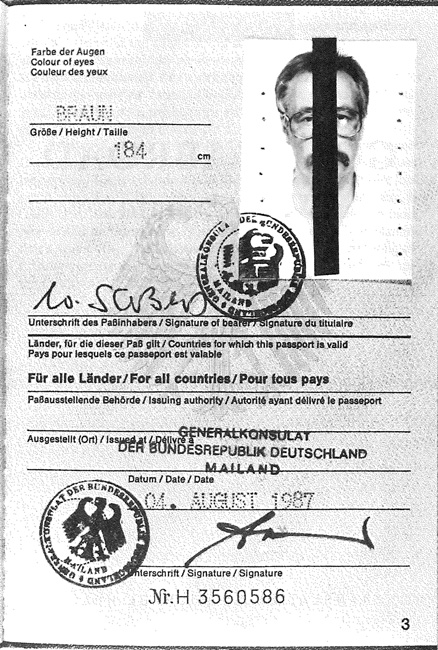
In post-war German literature there are surprisingly few writers who experimented with images. The almost-forgotten Rolf Dieter Brinkmann (1940-1975) combined text and image in his wildly collaged scrapbooks, and the renowned filmmaker and author Alexander Kluge (b.1932) has used text and image in his literary work since the ’90s to challenge discursive and narrative constructions.5 While Sebald knew of both authors and while his admiration for Kluge and his historical narratives is known, his interest in the combination of text and image or, more precisely, the principle of montage, can be traced back to his PhD thesis on Alfred Döblin. The crossing of different art forms, genres and media has always been the territory of avant- garde movements. Philippe Soupault’s La Fuite in La Révolution Surrealiste (1926) is often considered the first example of a narrative text with images included for more than just illustrative purposes. Breton’s Nadja was published in 1928, but the introduction of textual montage to the German literary tradition by Döblin in Berlin Alexanderplatz (1929) was so revolutionary that Walter Benjamin saw it in explosive terms, blowing up the framework and style of the bourgeois novel. Döblin assembles his montaged fragments so densely, Benjamin writes, that the author underneath ‘barely gets a word in edgeways’.6 This is a pretty accurate description of Sebald’s own style of montage and the multiple voices of different narrators in his texts – the only difference being that Sebald adopted the technique of montage so that images, too, are included in the narrative assemblage.
Benjamin not only wrote about montage in Döblin’s work, but adapted its technique for his own theoretical writings. Montage, with its play of distances, transitions and intersections, its perpetually shifting contexts and ironic juxtaposition, had already become a favorite device for him before Döblin wrote his novel. For the Arcades Project, the unfinished major philosophical work Benjamin began in the late 1920s, he planned ‘to carry over the principle of montage into history’.8 And, interestingly, he also planned to include images. While for Sebald images are a natural part of the writing process, they are essential for Benjamin’s concept of history. For him, history is not about textbooks and grand narratives, but about images: it is only in an image, in the brief flash of a moment, that we can recognize historical truth – the rest is the long thunder of the following text. When thinking about the past is determined by images, these images merge with our understanding of the present. In other words, there can’t be an image of the past independent from our present world views, and altogether it is hard to grasp an image of the past anyway: Benjamin describes what can be grasped as a brief flash of the past that amalgamates with the present. He calls this flash-like image, preserved or frozen as a still, the dialectical image: ‘it’s not that what is past casts its light on what is present, or what is present its light on what is past; rather, image is that wherein what has been comes together in a flash with the now to form a constellation.’9 ‘For while’, he goes on, ‘the relation of the present to the past is a purely temporal, continuous one, the relation of what-has-been to the now is dialectical: is not progression but image, suddenly emergent. – Only dialectical images are genuine images […] and the place where one encounters them is language.”
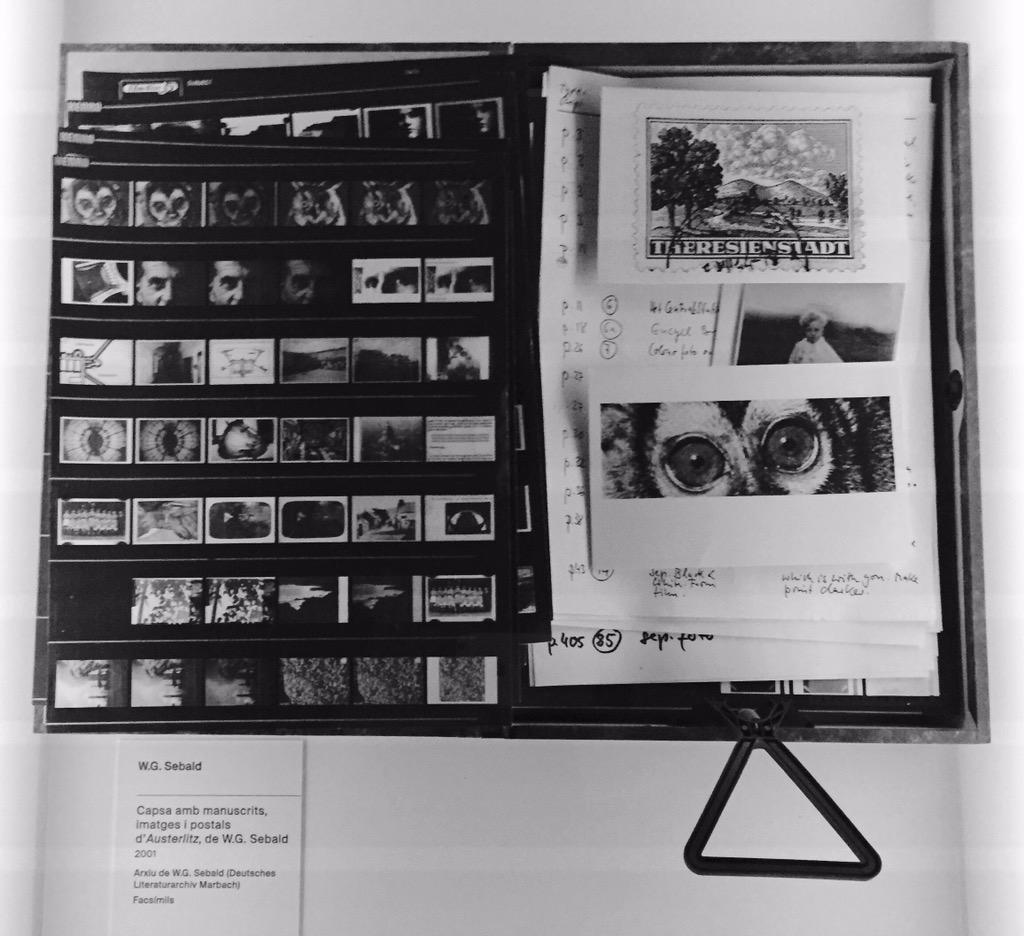
By including images in his texts – paintings, photographs and reproduced receipts, diaries or diagrams – Sebald reminds his readers of this: first, that the narrative cannot be reduced to pure imagination. The included research and its documents (as well as quotations and even, though rarely, footnotes) bear witness to biographical events and therefore to historical truth. And second, that neither the text nor the images can be fully trusted, since they only create a fictional narrative ‘based on true stories’ and that the readers need to put on an ‘inquiring gaze […] to penetrate the darkness’. The inclusion of images thus not only adds visually to the text and its ‘authenticity’, but at the same time challenges the reader to question the authenticity or, more precisely, to seek further for it.
This modesty of the author is also expressed in one of Sebald’s last books, the posthumously published Unerzählt (Unrecounted): a collection of 33 Haiku-like poems combined with drawings of pairs of eyes, of renowned or less renowned people, made in a photorealistic style by Jan Peter Tripp. Both text and image here are reduced to a minimum of expression: a small section of the head, three lines, five lines of text, a few syllables per line. In a way, this can be regarded as Sebald’s approach to writing: the text begins with an image; realism is combined with invention; and in an attempt to gesture at an untold story they come together, piece by piece.
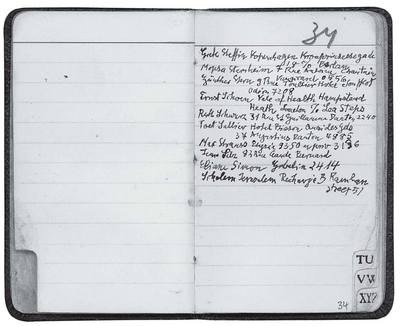
Walter Benjamin datebook
—-
*
p.s. Hey. Last year when Zac and I were in London to show PERMANENT GREEN LIGHT at the ICA, Chris Goode, who at least some of you will know as one of the UK’s most daring and brilliant theater makers, and other extended DC’s readers will know as a longtime d.l. and commenter of the blog, invited me to be on his podcast. That conversation, wherein we talk about PGL and books and all kinds of stuff, is now online. If you’re interested to hear it, there’s a direct link in the blog’s right hand column. ** David Ehrenstein, Hi. Well, the crosstown trip was a little less daunting in practice than the rules made it seem like it would be, but, yes, Paris is not at all itself right now. I hope that Warhol biography goes heavily into his films. That’s kind of the only thing of Warhol’s that’s of great interest and still ripe for analysis to me personally. And thank you about the GIF stack. ** scunnard, Hey. No problem, just give me the word when the word is ripe. ** Bill, Stealable is definitely a major goal of the blog’s output, so I’m happy to hear that. I have a bead on Cipri, but, with the mail service being essentially dead over here — Amazon has completely shut down, for instance — I’ll probably have to wait a couple of weeks to make the actual discovery. Oh, I loved your gig, really, from start to finish, the whole wooly and delightful thing, thank you so much! I didn’t get stopped by the cops, happily, but, if I had, my official reason was doing shopping for a sick friend. Apparently that’s the most unassailable excuse one can use. I will say hi to Zac for you. And he say say hi back, and I’ll try to remember to pass it on. ** Misanthrope, Thanks, G. We’re supposed to be up to speed for testing here later this week, and, if I understand right, it’s voluntary unless you’re actually sick, so I guess I’ll find out where to do that and get what I can only imagine is the all-clear sign since I haven’t had a tiny bit of ill feeling this whole time. My weekend wasn’t bad. I hope yours was like seeing and simultaneously being your favorite band in concert. ** Damien Ark, Oops about your eyeballs. Or is that cool, thanks, about your eyeballs. Both? I’m doing just fine considering everything. And you too, I hope? ** _Black_Acrylic, I couldn’t possibly agree with you more, sir. ** Dominik, Hello, D!!! Oh, it was good, First it was so nice to both get out of my apartment for 4 hours and see Paris’s other side again. And naturally to see Zac since I hadn’t seen him in 5 weeks, which is pretty crazy. And he incredibly kindly gave me a big jar of cold sesame noodle that he made to take home with me. Cold sesame noodle is my favorite food on earth and an aka for God. So between those two things my weekend was made. I think the filming was okay. It’s hard to tell since we don’t know what they want and need to hear to give us money. Zac edited it into a 9 minute thing, and we’re waiting for our producer to sign off on it because it’s due today. Ah, you were in a Magnotta wormhole. Did you find any of his porn? I assume some sleuth must have put his name on it and uploaded it here and there. Not that I recommend his porn, and certainly not as a lust creator. The rest of my weekend was the usual stuff. I can’t remember, as usual. Emails, fitful work, music, a bit of movie watching. Well, I am the only other person on earth who hasn’t heard the Fiona Apple album, so a big high five. How was today? Did Monday seem like the starting gate of a dreamy week? I had to look up Karla Homolka, how embarrassing, I should have known that. I thought maybe she was some Instagram star or Kardashian knock off or something. Love that gift wraps Budapest and scotch tapes on a tag with your name written on it and puts it under a super massive Xmas tree, Dennis. ** Steve Erickson, Yikes. Well, I can only hope your lockdown will end sooner than later then. So sorry to hear that. I haven’t pursued that QAnon stuff and do not intend to, so if he/they want to check in, it’s their decision. I feel pretty sure the blog is long since yesterday’s dalliance by now. Nice sounding weekend film fest there. I watched a documentary about Steven Arnold, an LA based strange filmmaker (‘Luminous Procuress’), photographer, founder of the Cockettes, etc. He was certainly a singular guy even if his thing — kind of overwrought Queer surrealism — is not my thing. And this and that. I don’t have Spotify, but … Everyone, Should you have Spotify, Mr. Erickson made a playlist of what he terms ‘fake New Wave’ tracks under the title ‘Jumping Someone Else’s Train: Coat Tails and Skinny Ties’, and, at a glance, I see everyone and his uncle in there from ZZ Top to Paul McCartney to Village People, so it must be a lot of fun. Listen. Here. ** Corey Heiferman, Hi, Corey. Thanks a lot, pal. That hyperbolic geometry video looks most curious. I’ll hit it up when I’m free of this. And the star one too. Thank you kindly. Good news about the easing. Two and a half-plus weeks left for us, fingers stranglingly crossed. ** Okay. Today I restored an old, formerly dead post about the late and very great WG Sebald. Enjoy. See you tomorrow.




 Now available in North America
Now available in North America 
Deaths can indeed be unbearable. AIDS taught us that. I’m still mourning all my friends who died in that epidemic.Now we’ve got Covid-19. Sebald left us his work. Art is as close as all of us ever get to immortality. I was thinking about that just yesterday watching Fred and Ginger do “Pick Yourself Up” in “Swingtime” and utterly erasing the line between “high” and “low” culture — which is why Frank O’Hara loved them so much.
Meanwhile My Old Enemy Joseph Epstein (who is well into his 90s) has been thinking about Death Darkly funny in ight of is wish abck in the day that all gay men would die.
Well we didn’t.
I love Sebald’s writing, and the way he uses photographs in his text is amazing. Reading the blog just now, makes me want to re-read his works. And yes, Fiona Apple. She’s an artist I never really think about – and I even met her at a wedding about 12 years ago. She’s super nice. I just heard her album a few days ago, and I like it a lot. For whatever odd reason it reminded me of The Last Poets (why?) and the Shangri-Las, with a touch of early Peter Gabriel solo work. She has a song about someone kicking her under the table, whenever she said something not correct in such a company. It reminded me of my dad, who would do the same thing to me under the table – that kick.
I greatly enjoyed the Chris Goode interview yesterday. Got me thinking about the way humour works in PGL especially. I’ve long been interested in the Concrete Comedy idea of David Robbins and it’s been percolating through my brain lately. Also been loving the recent Kathryn Scanlan book and Limmy’s Homemade Show, all of which feature a kind of joke that’s even more hilarious for having no punchline.
Sebald is one of the many literary titans I’ve never read a word of. Didn’t publish till he was 40, encouraging tidbit for an unpublished 30 year old.
David you reminded me that I’d meant to link to this Judy Garland/Gene Kelly number on the Clowns post a few weeks ago:
https://www.youtube.com/watch?v=aXmGpLYiFWU
Sesame noodles. You induced a craving. Enjoy! I’m not going to hunt around for authentic Chinese sesame paste but I’ll try to improvise with tahini paste. If you’re not already into tahini paste I think it’s perfect for vegetarians who don’t like cooking. Just mix with lemon juice and garlic to taste and stir in water for desired consistency and voila a flavorful sauce or salad dressing. Plus you could use it as a pretext for your next crosstown excursion.
Good luck with your grant application. If it makes it feel any better I can tell you to consider it a privilege that you and Zac were given the chance to make your case in a pitch video. During my brief immersion in the Israeli film industry I learned that absolutely everything here depends on the screenplay, even for documentaries oddly enough.
To give my two cents on the Fiona Apple album: I hear a lot of Joni Mitchell.
By the way, how have you been attempting to fill the tiny mixtapes void? I can still find new music but haven’t had as much luck with whimsical music writing.
I’m embarrassed that I’ve never read any Sebald. Time for that to change!
Good to hear the crosstown trip went smoothly. Glad you enjoyed the gig! Wild and wooly are good descriptors, I guess Peter Woods tends to draw that out in me. Last time I saw him perform solo, he was pulling a fairly lengthy large gauge metal chain out of his mouth for like 10 minutes.
Yeah I heard about the Amazon shutdown in various countries. The Cipri collection is available as a ebook, if you do that sort of thing. DL Tim Jones-Yelvington is also a fan.
Bill
Hi Dennis, how are you? It’s been a while. I took a long break from the internet, except for research and pirating books. Lovely post about Sebald. Was thinking about him again recently and rereading some of Vertigo.
Hi D.,
I love Sebald but have little to add on that front. So, just a brief and emotionally cathartic update from me here given our previous chatting remaining so COVID focused. I’ve been hesitant about sharing the news with my overseas friends because I know things are endlessly difficult over there. But. Our nation has been given the go-ahead by our Prime Minister to lift lockdown on April 28th. It’s five days later than we were expecting but it’s an official end date and it’s in sight. In practice, that doesn’t mean much for us – we are still expected to isolate, all businesses remained closed for visiting, but we can order online from that date forward (which we can’t do now), and we are given access to playgrounds, beaches, walking tracks etc (which we don’t have now, technically). We will remain in that state for two weeks. Things will then be reassessed and we may exit security measures entirely then. It’s a good feeling to have something resembling an end in sight. The Prime Minister’s address was the most emotional moment I can recall in recent years.
I see that you managed to get out to see Zac and that it was great – that is fantastic to hear, I hope you keep finding small (and safe) things like this to keep yourself preoccupied, legally or otherwise. And if there’s an end in sight here, there’s an end in sight there, even if it is a little later. The soppy NZ government propagandist phrasing right now is ‘STAY STRONG STAY SAFE STAY HOME’ but instead I’ll give ya this
Stay sane
Stay home
With love
J
Latest FaBlog: R.I. Peter Beard
Hi!!
Yaaay, you saw Zac and the video was born and he’s a sweetheart for surprising you with some cold sesame noodle! I have to confess I’ve never in my life tried it! I’ll remedy that once we can actually go out and eat wherever we want to again. Is your producer the same person you’ve had so many problems with in the past?
Yes, Jesus, I did find one of Luka’s movies and he looked so thoroughly out of it and uncomfortable during the whole thing. Saying these “porn sentences” in a completely flat voice. I actually felt sorry for him, it was really bad to watch. Also, he was a lot smaller, a lot more fragile than what I expected for some reason.
I spent most of today reading various psychological articles about schizophrenia and psychosis and violent crimes and amnesia so it was all sunshine and rainbows – my kind of fun, haha. What happened on your end?
Love that says “I am not your foot” in a weird Twin Peaks voice!
Dennis, thanks for this re:post. We talked shorlty about Sebald days ago and now the post is back. When I first saw this post on the old blog I saved the name, the ghostly name of the blog post.. everytime when I come across some Sebald stuff I think “the ghostly novels of W.G. Sebald”. Maybe half a year later I saw Austerlitz in a store, grabbed it and couldn`t stop reading it and went on to the next book. I read them all. It was a coincidence but at the time when I read Vertigo I had so bad problems myself with vertigo, panic, anxiety and stuff, not knowing what was going on with me. I went to hospital to the stroke unit and I took this book with me. Perhaps people there thought it was like a book about the medical problem “vertigo” (the German title is Schwindel Gefühle – Vertigo Emotions, two words though). Even at that darker times I liked the unintended irony! See you tomorrow around here Uli
For whatever reason, I was deeply depressed today, and there have only been about 4 hours where I didn’t feel like lying in bed all day. I did write a review of DEERSKIN and turn it in. I can’t remember if you’ve seen it. It held up very well. Playing its absurdism with a straight face and going from “this is a cool, weird concept” into “this is actually really disturbing” really worked for it.
I called my eye doctor today, got his voice-mail, left a message and never heard back, but I guess I just have to wait till isolation is lifted.
Here’s my review of BEASTIE BOYS STORY: https://www.slantmagazine.com/tv/review-beastie-boys-story-is-part-memorial-and-part-ted-talk/
Dennis, I have The Emigrants on my shelf and have never picked it up. Almost did last week and then said, eh, I’ll read this Stephen Fry.
Well, I can’t say my weekend was THAT exhilarating, but it was chill and that was okay. It didn’t totally suck or anything. Watched a few episodes of that show Ozark with my mom and Kayla. It’s pretty good.
We’re ready to bust out!
So up in, I think, Boston, they tested all 397 people in a homeless shelter. 146 had COVID-19. Guess what? Not one -not exaggerating, NOT ONE- had any symptoms. Hmm…
Also, there are a few really good studies that just came out that say that most transmission happens in homes and other confined spaces like subway cars. This thing isn’t transmitting barely at all in open spaces like parks and beaches and that sort of thing, big, open places where people aren’t shoulder to shoulder for long periods of time.
All of which is to say that I think we can open this stuff up slowly but surely and responsibly and be okay. Another 6 months or year of this ain’t gonna cut it.
Anyway, enough of all that. Time to party! Or something.
Well, really, time to work on things, Art things. Query letters. Etc. It’s weird, with all this extra time on my hands, I find myself becoming less focused a lot and more distracted. Was talking to Rigby the other day -we’ve been talking on the phone via WhatsApp and now Viber- and he said he’s experiencing the same thing. So easy to start off busy and just plow through things. With extra time, so easy to “wander off,” so to speak.
I was on the phone with him over the weekend and it was 1 a.m. his time. Across the street from him, the off-license was getting burgled. He gave me a play by play. The burglars were quite efficient. I encouraged him to go down and get himself something but he didn’t. 😛